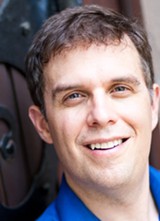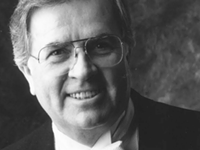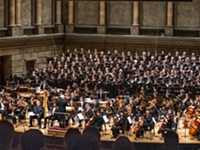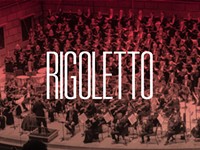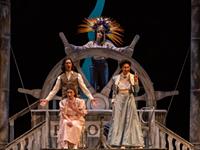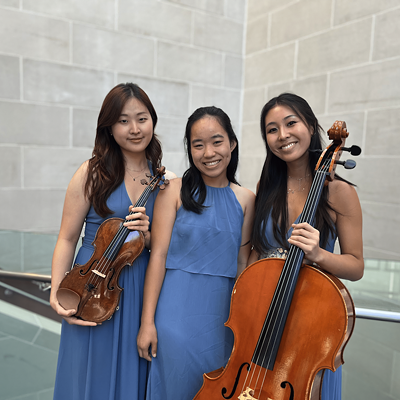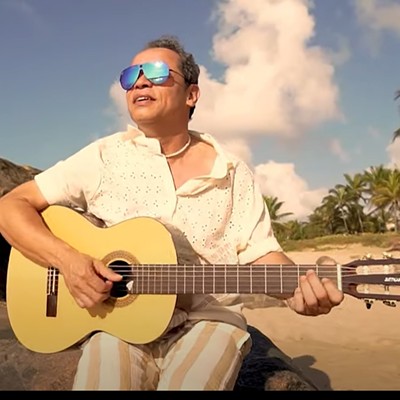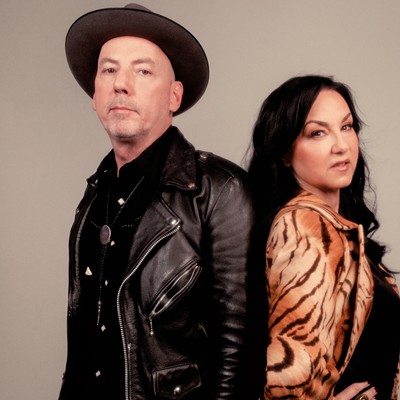[
{
"name": "500x250 Ad",
"insertPoint": "5",
"component": "15667920",
"parentWrapperClass": "",
"requiredCountToDisplay": "1"
}
]
Music history includes many Bachs. Johann Sebastian, who lived from 1685 to 1750, was the greatest of his musical family and still the best known to us. But Europe boasted other Bachs throughout the 17th and 18th century, and among the most prominent was one of Johann Sebastian's sons, Carl Philipp Emanuel.
In his lifetime, Johann was considered a rather old-fashioned composer. The revival of his music began in the early 19th century, and it has been considered one of the cornerstones of western culture ever since. C.P.E., who was born in 1714 and died in 1788, has not been so lucky. He wrote a lot of music, from large-scale choral works, to early examples of the symphony, to chamber and keyboard music. Much of it was famous and influential in his own time, but little of it is heard these days.
A pair of concerts this weekend by members of Publick Musick will give some examples of music by father and son, and perhaps show why Carl Philipp Emanuel deserves more attention. He has been receiving a bit more of it lately: C.P.E. celebrates his 300th birthday in 2014, and quite a few recordings of his works are coming out; in fact he was "Gramophone" magazine's cover boy a few issues ago. (Publick Musick is also anticipating Johann Sebastian Bach's 330th anniversary in 2015.)
The participating musicians are three experienced practitioners of music in historically informed style. Keyboardist Andrus Madsen is the director of Newton Baroque in Newton, Massachusetts, and an active performer on the organ, clavichord, harpsichord, and fortepiano; violinist Boel Gidholm and cellist Christopher Haritatos, who live in Rochester, often perform in early-music concerts here.
Carl Philipp Emanuel was the fifth of Johann Sebastian's 20 children. Many of them went on to distinguished careers, but C.P.E.'s was perhaps the most distinguished of all: For 30 years, he was the Kapellmeister, or chief court composer, to Frederick the Great of Prussia. "In the later 18th century, if anyone mentioned 'Bach', they were referring to Carl Philipp Emanuel," Haritatos says.
His music was forward-thinking for its day, and known for what was called Empfandseimkeit, or "expression of feelings." It was proto-romantic in its extremes of emotion and dynamic range. In fact, more conservative musicians of the time found it sometimes a little too extreme. But others found it an inspiration — like Joseph Haydn, whose early symphonies and piano sonatas can be equally unpredictable.
Haritatos and Godholm point out that C.P.E. Bach described his music as "für Kenner und Liebhaber" — for scholarly and for amateur musicians. Consequently he wrote in many different styles, from light, bright dance music to pieces with more sophisticated structures and emotions. C.P.E.'s long career is represented by early and late works: a movement from a dance suite demonstrates his lighter side, and a Fantasia in F-sharp minor for keyboard, written a year before his death in 1788, displays the mood swings which make his music so distinctive. (The piece quotes an earlier song stating "My thoughts are about death," which helps explain its atmosphere.)
The program contrasts the music of father and son, with Haritatos playing a J.S. Bach solo cello suite, and Gidholm and Madsen performing one of his violin sonatas (with Haritatos reinforcing the bass line on cello). The program also includes a work that has attributed to both Johann Sebastian and Carl Philipp Emanuel: a piano trio, which Gidholm calls "really a sonata for keyboard with violin and cello."
All three musicians will play copies of 18th-century instruments, which lend what Gidholm calls a "more transparent sound" to the instrumental blend. For string instruments, this involves the use of gut strings as opposed to metal, and differently shaped bows, among other things. And the keyboard will look nothing like a modern grand piano: in fact Madsen will be playing a copy of an instrument that would have been familiar to C.P.E. Bach in the mid-18th century.
"The balance takes care of itself when you all play period instruments," Gidholm says. "Everyone can play out without obliterating each other."
Gidholm and Haritatos are the current artistic directors of Publick Musick. The early music organization was founded in 1999 and run by Thomas Folan until 2007; Haritatos and Gidholm played in many of their concerts before they moved to Austin, Texas. Many of Publick Musick's earlier concerts presented large-scale choral works; now the focus is more on vocal and instrumental chamber music. Upcoming concerts include an appearance at the Rochester Fringe Festival, and a December program of German Christmas music with the Memorial Art Gallery's Italian baroque organ.
